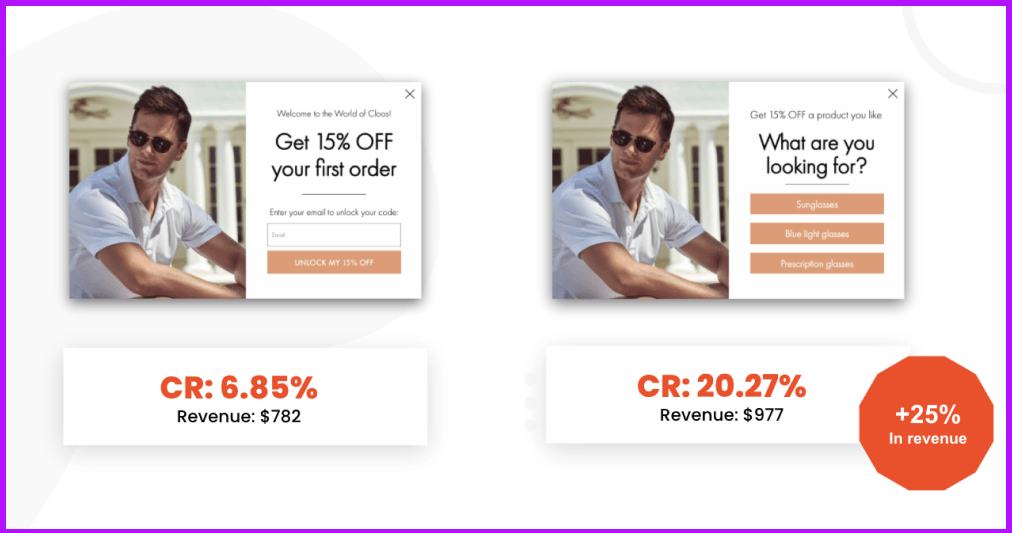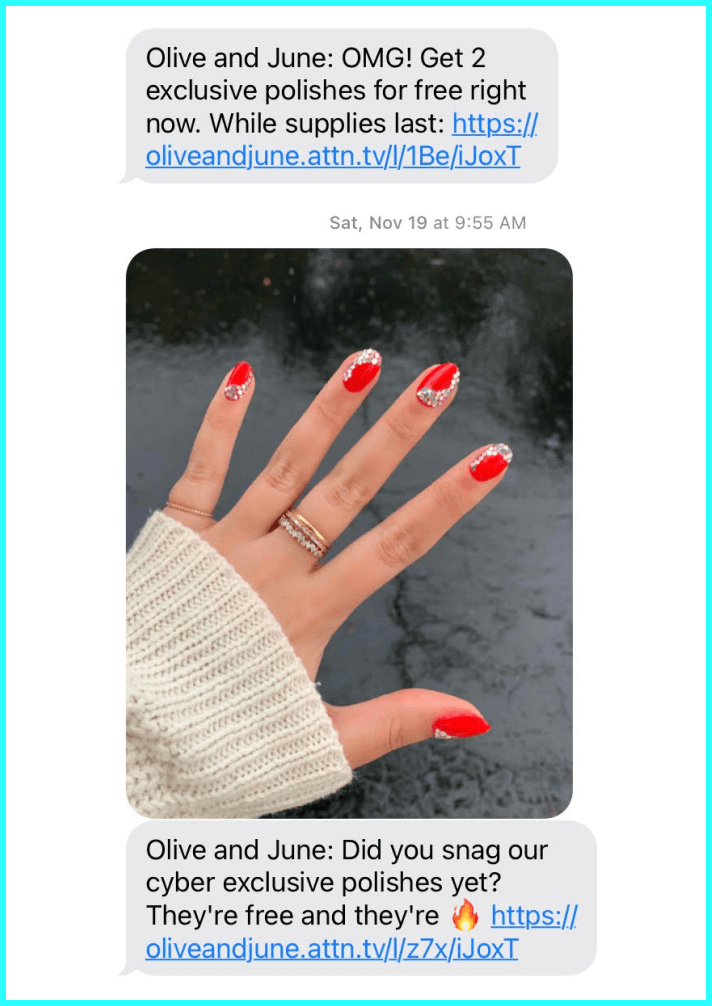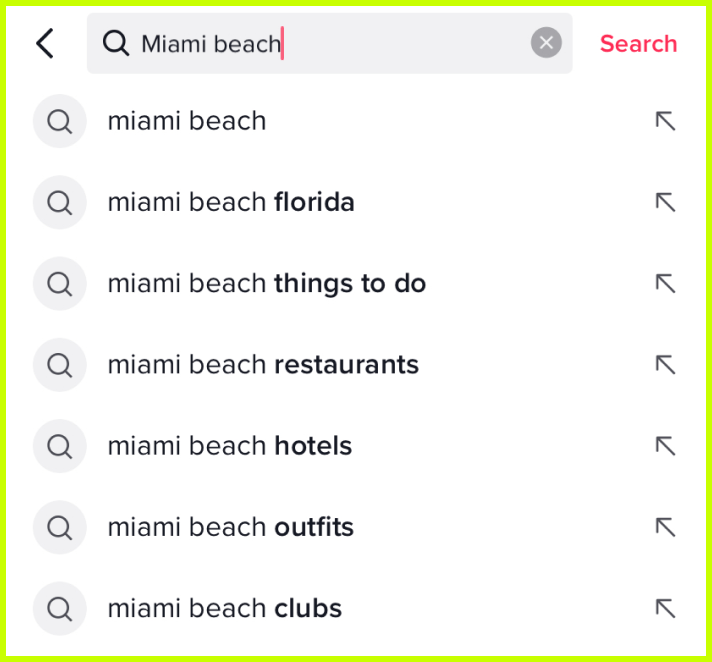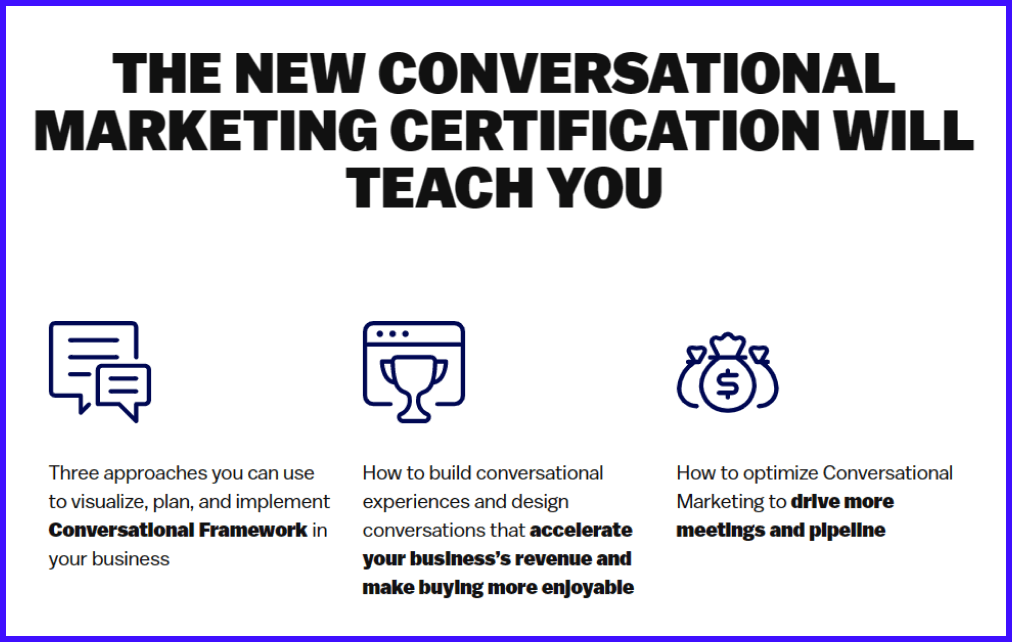We tend to think of trends as something that comes and goes.
And while I won’t tell you you’re wrong for ignoring most fashion trends, when it comes to marketing…you should pay attention.
Because the best marketing trends aren’t based on hype — they satisfy customer expectations, put new technology to work, and drive better results. Plus, the impact of marketing trends is long-lasting, as marketers work to implement best practices according to their budget and team capacity.
That’s why, today, we’re covering the top trends marketers need to know in 2023. We’ll be diving into all the details about these newest marketing trends, as well as offering tips and examples to inspire you as you prepare for the year ahead. Here are all the trends we’ll be covering in this blog:
- Personalized Marketing
- Lightning-Fast Experiences
- Short-Form Video
- Authentic Storytelling
- AI-Powered Email Automation
- Conversational Marketing as a Channel
- High-Quality SMS Marketing
- Search Optimization Beyond Google
- Free Content That’s Good Enough to Charge For
- Community Building Through Events
Without further ado, let’s look at the top marketing trends for 2023 👇
1. Personalized Marketing
According to McKinsey, 71% of consumers expect companies to deliver personalized interactions, and 76% get frustrated when that doesn’t happen.
It’s easy for businesses to think that personalization just means adding someone’s name to an email, but it’s so much more than that. Marketing personalization should serve as a vehicle for customizing the buying journey. Just take it from the 80% of consumers who say they’re more likely to purchase from a brand that provides a personalized experience.
That’s why one of the most effective ways to implement personalization is to have your customers raise their hands and tell you exactly what they want.
Consider this conversational pop-up created with OptiMonk. When eyewear brand Christopher Cloos asked customers what they were looking for in a coupon pop-up, they experienced a 25% uplift in revenue generated.

Source: OptiMonk
Keep in mind that this level of personalization isn’t limited to pop-ups. You can use a similar choose-your-own-adventure strategy in email marketing, SMS marketing, and Conversational Marketing too.
2. Lightning-Fast Experiences
We live in a world of immediacy. Our Amazon purchases arrive in a day or two, and our impulsive DoorDash orders come to our doorsteps still piping hot.
These quick experiences bleed into every facet of our lives. In 2023, B2B and B2C companies will attempt to keep up — whether through simpler buying experiences, smoother customer service, or faster shipping. While traditionally, these aspects of the customer experience might not fall within marketing’s wheelhouse, growth marketers, who look at every piece of the funnel and customer journey, will certainly be taking them on.
Chatbots offer one of the best ways to give customers what they want as soon as they want it. Revenue intelligence leader, Gong, uses Drift’s custom chatbots to answer site visitors’ questions and direct them to the right content on their website.
With their chatbot (affectionately named BrunoBot), the team at Gong has been able to create a customer experience that adapts to their buyers’ needs and preferences — which has translated into $9 million in pipeline influenced and a 44% quarter-over-quarter increase in meetings booked.
Chatbots not only open a quick line of communication with your customers, but they can also help you direct the right buyers to your human sellers, making it more likely for them to engage with your brand again. It’s no wonder then that 57% of B2B sellers say that their success with Conversational Marketing comes from the ability to provide quick, instant answers via chat.
3. Short-Form Video
Popularized by TikTok, short-form videos have now taken over every social media platform. TikTok videos are frequently uploaded to LinkedIn and Pinterest. YouTube and Instagram have launched Shorts and Reels, respectively.
Short-form videos offer a ton of benefits across the board. For customers, they provide quick information, offer entertainment, and adhere to short attention spans (after all, we know nobody reads full landing pages anymore). For marketers, they offer an informal format that doesn’t require any fancy lighting or editing.
B2C companies have been growing their audiences on TikTok for a few years: Nike has 3.2 million followers on TikTok, while Duolingo has 5.4 million followers.
And now, B2B companies are joining in. Project management platform Asana has started its TikTok account with one of their top-performing videos tapping into some office humor when the content creator changes the due date for an overdue task.
@asana
The demand for short-form videos is high. Even if your target audience isn’t on TikTok, you can benefit from using the app’s video creation features and then reposting the videos where your audience lives. With his sales humor, sales influencer Will Aitken wracks up tens of thousands of views on both TikTok and LinkedIn.
4. Authentic Storytelling
By now, surely you’ve witnessed the internet blow up over ChatGPT. This writing assistant, released by OpenAI, has taken the marketing world by storm in part because it’s free to use.
At this point in time, AI doesn’t seem to be able to generate text of the caliber that many brands require. AI content tends to be stuffy and boring to read. Worse, it can be inaccurate. (Open AI’s CEO even says that “it’s a mistake to be relying on it for anything important right now.”)
But that’s not stopping millions of people from using it.
That’s because AI empowers brands to deliver more authentic experiences at scale. Just think of how AI chatbots allow businesses to engage more site visitors without compromising on personalization — that’s exactly what Okta has done using our Conversational AI, which has led to them doubling their marketing-qualified lead to sales-qualified lead conversion rate.
As the use of AI increases, we can expect top-tier brands to lean on the power of storytelling to create articles that grab attention and connect with the reader. Take, for example, this piece from the CEO of SaaS capital lending platform Capchase on how they’ve grown their business despite 2022’s economic downturn.

Storytelling is also becoming more popular on other channels as well. One TikTok trainer says that, as the platform has developed, success will come through telling captivating real-world stories — and less from hopping on viral dance trends.
So, in 2023, expect marketers to tell more stories — from customers, founders, and staff members alike. Through storytelling, you too can show off your human side, entertain your audience, generate more engagement, and help customers envision new landscapes.
5. AI-Powered Email Automation
Email automation has been on the scene for over a decade. But in 2023, marketing teams will be bringing AI into the picture.
Now, email automation platforms use AI to surface the best leads for a specific offer, remove cold subscribers to improve deliverability, and automate the buying experience. Email automation stretches across many channels and can help drive audiences to download more content, attend webinars and events, or engage with ABM campaigns.

Marketers should spend 2023 zooming out to get the big picture. Here, it will be important for marketers to QA test the email journey from different angles and consider different combinations of user behaviors to make the most of their emails in the coming year.
6. Conversational Marketing as a Channel
As a tool, Conversational Marketing offers a way to personalize the buying experience and answer questions quickly. But it’s also a channel in its own right.
In 2023, marketers will focus more on Conversational Marketing as a channel and treat it with as much (if not more) attention as other channels. For example, you can use your Conversational Marketing solution to share a valuable new report, like our friends at Seismic are doing here 👇

With a Conversational Marketing solution, you can review the clickthrough rates and conversation rates of your chatbot sequences, come up with new ideas to test, and continuously optimize content. In the near future, you can expect more marketing teams to devote resources to releasing fresh chatbot sequences so customers always have new content to interact with.
7. High-Quality SMS Marketing
With an average open rate of 82%, SMS marketing blows email’s 20% average open rate out of the water.
With the SMS marketing software market predicted to grow 23% every year from now until 2030, expect more marketers to give SMS marketing the attention it warrants in 2023. With this growth, you can also expect companies already using SMS to take the customer experience to the next level.
Olive & June, a brand of shockingly long-lasting nail polish, offers an excellent example of SMS marketing done right. They often include customer images in their text messages, almost as if a friend was texting her BFF a pic of her new mani.

They also offer free products and big discounts, giving people a reason to stay on the list. As a low-priced brand that lends itself to repeat purchases, Olive & June is well poised to win with SMS. Products that are more expensive or aren’t purchased as frequently might struggle to succeed with SMS — but it will be well worth it with the audience you can reach.
8. Search Optimization Beyond Google
Google still reigns supreme when it comes to online searches, processing over 8.5 billion searches each and every day. But times are changing.
40% of Gen Zers turn to TikTok and Instagram to search for information instead of Google. A quick search in TikTok for Miami Beach shows that the top suggested searches are research-oriented (not just for entertainment). Gen Zers want to find out what to do, where to stay, where to eat, and what to wear when they head to Miami.

As a result, we expect B2C marketers to focus more on optimizing their social media content for search engines through captions, hashtags, and on-screen text added natively with the social media app.
On another note, there’s talk of ChatGPT being used as a replacement for Google. With ChatGPT, users can get a single AI-generated answer to their question rather than a list of search results. While there’s no sign of ChatGPT replacing Google anytime soon, we can certainly expect marketers to keep up with the situation in the coming years.
9. Free Content That’s Good Enough to Charge For
Today, consumers and B2B buyers alike expect self-service buying with minimal human interaction. Content marketing facilitates this by providing the resources customers need to decide what products and services to buy.
But it’s been over 25 years since the term “content marketing” was first coined. The practice has been adopted across all industries. Content is everywhere.
To stand out and attract customers, marketers need to create content that’s so valuable, you could charge for it. We’re talking courses, templates, frameworks, playbooks, and calculators. These resources should solve problems for your audience, save them time, and improve their results with your products and services.
In 2023, expect to see more brands really up their game when it comes to the effort they put into creating free content and the impact that that content has on customers. Our Conversational Marketing Certification is a great example of high-quality content that could be a paid course.
When your brand gives away these experiences for free, you get to enjoy the psychological phenomenon of reciprocity — people will want to give back to you by recommending your brand to others, even if they’re not paying customers yet.
10. Community Building through Events
How can we create a place for our customers to interact with each other? This question of community building remains a hot topic among marketers.
Live events, whether in-person or virtual, offer an excellent opportunity for brands to foster community building without having to run a forum 24/7. So long as attendees can interact with each other (either in the comments or at the bar), it counts as a community.
Ellevate, a networking platform for professional women around the globe, hosts Community Circle events so women can connect with others like them, whether they’re 40+ or LGBTQIA. They also host local chapter events, expert roundtable discussions, and new member welcome sessions.

If you want to create top-tier events for your community, competitive research isn’t always enough (especially if your competitors are asleep on the job). You might find more inspiration in dedicated communities and networking groups like Ellevate. See what kind of conversations the communities in your niche or industry are facilitating, attend virtual events to see which sessions drive the most participation, and then use this intel to craft your own events for 2023.
Stay on Top of the Best Marketing Industry Trends & Make Them Your Own
Hopping on the latest trend might give you a boost in engagement, but it won’t help you build a satisfied customer base.
Ultimately, the right trends for you come down to what your audience wants. When you focus on your customers, it’ll be easier to know which hot trend will yield results. So, start by assessing your current marketing strategy and talk with your customer base. Then, implement the trends that you know will wow them — so that you can make 2023 your best year yet.
Find out the latest conversational trends in our 2022 State of Conversations Report and subscribe to our monthly marketing newsletter to stay on top of up-and-coming trends.








